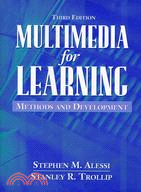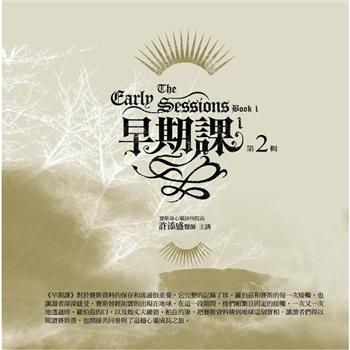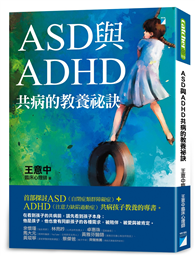| FindBook |
有 1 項符合
MULTIMEDIA FOR LEARNING: METHODS AND DEVELOPMENT 3/E的圖書 |
 |
MULTIMEDIA FOR LEARNING: METHODS AND DEVELOPMENT 3/E 作者:ALESSI、TROLLIP 出版社:全華圖書 出版日期:2000-01-01 語言:英文 規格:平裝 / 580頁 / 普級 / 單色印刷 / 初版 |
| 圖書館借閱 |
| 國家圖書館 | 全國圖書書目資訊網 | 國立公共資訊圖書館 | 電子書服務平台 | MetaCat 跨館整合查詢 |
| 臺北市立圖書館 | 新北市立圖書館 | 基隆市公共圖書館 | 桃園市立圖書館 | 新竹縣公共圖書館 |
| 苗栗縣立圖書館 | 臺中市立圖書館 | 彰化縣公共圖書館 | 南投縣文化局 | 雲林縣公共圖書館 |
| 嘉義縣圖書館 | 臺南市立圖書館 | 高雄市立圖書館 | 屏東縣公共圖書館 | 宜蘭縣公共圖書館 |
| 花蓮縣文化局 | 臺東縣文化處 |
|
|
內容簡介
目錄
Table of Contents
Preface.
I. GENERAL PRINCIPLES.
1. Introduction.
A Short History of Educational Computing.
When to Use the Computer to Facilitate Learning.
The Process of Instruction.
Methodologies for Facilitating Learning.
Two Foundations of Interactive Multimedia.
Developing Interactive Multimedia.
2. Learning Principles and Approaches.
Behavioral Psychology Principles.
Cognitive Psychology Principles.
Constructivist Psychology Principles.
The Constructivist - Objectivist Debate.
3. General Features of Software for Learning.
Learner Control of a Program.
Presentation of Information.
Providing Help.
Ending a Program.
II. METHODOLOGIES.
4. Tutorials.
Questions and Responses.
Judgement of Responses.
Feedback about Responses.
Remediation.
Organization and Sequence of Program Segments.
Learner Control in Tutorials.
5. Hypermedia.
Structure of Hypermedia.
Hypermedia Formats.
The Hypermedia Database.
Navigation and Orientation.
Support for Learning and Learning Strategies.
6. Drills.
Basic Drill Procedure.
The Introduction of a Drill.
Item Characteristics.
Item Selection and Queuing Procedures.
Feedback.
Item Grouping Procedures.
Motivating the Learner.
Data Storage and Program Termination.
Advantages of Multimedia Drills.
7. Simulations.
Types of Simulations.
Advantages of Simulations.
Factors in Simulations.
Simulation Design and Development.
8. Educational Games.
Examples of Educational Games.
General Factors in Games.
Factors in the Introduction of a Game.
Factors in the Body of the Game.
Factors in the Conclusion of a Game.
Pitfalls Associated with Creating and Using Games.
9. Tools and Open-Ended Learning Environments.
Construction Sets.
Electronic Performance Support Systems.
Microworlds.
Learning Tools.
Expert System Shells.
Modeling and Simulation Tools.
Multimedia Construction Tools.
Open-Ended Learning Environments.
10. Tests.
Computerized Test Construction.
Computerized Test Administration.
Factors in Tests.
Other Testing Approaches in the Computer Environment.
Security.
11. Web-Based Learning.
What Is the “Web” in Web-Based Learning?
Uses of the Web for Learning.
Factors in Web-Based Learning.
Concerns with Web-Based Learning.
Advantages of Web-Based Learning.
The Future of Web-Based Learning.
III. DESIGN & DEVELOPMENT.
12. Overview of a Model for Design and Development.
Standards.
Ongoing Evaluation.
Project Management.
Phase 1. Planning.
Phase 2. Design.
Phase 3. Development.
Establishing Expectations.
The Evaluation Form.
13. Planning.
Define the Scope of the Content.
Identity Characteristics of Learners and Other Users.
Establish Constraints.
Cost the Project.
Produce a Planning Document.
Produce a Style Manual.
Determine and Collect Resources.
Conduct Initial Brainstorming.
Define the Look and Feel of the Project.
Obtain Client Sign-Off.
14. Design.
The Purpose of Design.
The Audiences for Design Documents.
Develop Initial Content Ideas.
Task and Concept Analyses.
Preliminary Program Description.
Detailing and Communicating the Design.
Prototypes.
Flowcharts.
Storyboards.
Scripts.
The Importance of Ongoing Evaluation.
Client Sign Off.
15. Development.
Project Management.
Prepare the Text Components.
Write the Program Code.
Create the Graphics.
Produce Video.
Record the Audio.
Assemble the Pieces.
Prepare Support Materials.
Alpha Testing.
Making Revisions.
Beta Testing.
Final Revisions.
Obtaining Client Sign-Off.
Validating the Program.
|







![塔木德:猶太人的致富聖經[修訂版]:1000多年來帶領猶太人快速累積財富的神祕經典 塔木德:猶太人的致富聖經[修訂版]:1000多年來帶領猶太人快速累積財富的神祕經典](https://media.taaze.tw/showLargeImage.html?sc=11100697818)



